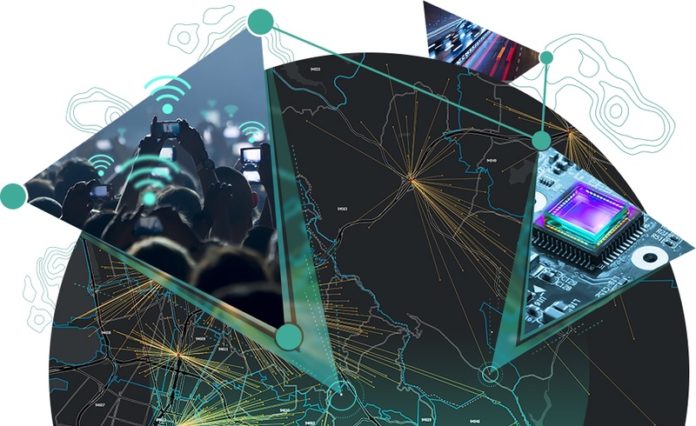Esri, the global leader in location intelligence, today announced the release of ArcGIS Velocity. Previously known as ArcGIS Analytics for IoT, Velocity is a new cloud-native capability for ingestion, processing, visualization, and analysis of real-time and high-volume geospatial data on the fly. It complements existing systems with geographic information system (GIS) technology by spatially enabling Internet of Things (IoT) data from current providers and simplifying real-time data analysis.
Velocity enables users to capture information from sensors, moving objects, or anything that changes over time, and then automatically flag patterns, trends, and anomalies. This will allow deployed personnel to access time-critical information the moment they need it.
“This new capability will help organizations take advantage of the insights made possible by the Internet of Things with up-to-the-second data and improved situational awareness,” said Jack Dangermond, Esri founder and president. “Organizations will now be able to easily connect to the increasingly real-time world.”
ArcGIS Velocity is also now available in two additional license levels—Standard and Advanced. These new licenses offer different storage and compute capabilities and will make Velocity more accessible for customers across industries such as commercial, natural resources, utilities, transportation, national government, water and wastewater, and public safety.
“Being able to have real-time insight into vehicle travel across the state has always seemed like a pipe-dream, but ArcGIS Velocity makes it not only a reality, but an easy-to-achieve reality,” said Roger Cleaves, GIS Specialist, California Department of Toxic Substances Control. “Since it’s all hosted on the cloud, setup couldn’t have been easier, allowing us to start answering important questions regarding hazardous waste instantaneously. The potential is endless, from real-time notifications to capacity planning, and even environmental impact modeling.”
Organizations across industries can improve their operations by better leveraging IoT data produced by devices and sensors. Remote monitoring of assets, predictive maintenance, and process optimization are a few of the benefits that can be gained from IoT data. ArcGIS Velocity lets users incorporate geospatial analysis into their decision-making as well as share results in the form of a map, feature, or stream service that can be used in other ArcGIS applications.
Via a simple drag-and-drop interface, users can create dynamic processing pipelines that combine functions from a rich library of fast spatial operations. These include geofencing, buffering, pattern detection, spatial aggregation, spatial enrichment, and proximity alerting. ArcGIS Velocity results can then be pushed as alerts or directly published as GIS maps and data services for use across the enterprise by any application for additional data fusion, mapmaking, or analysis.
To learn more about how ArcGIS Velocity can help industries access the power of location in the IoT, visit go.esri.com/arcgis-velocity.



